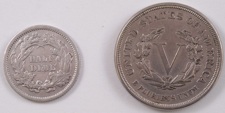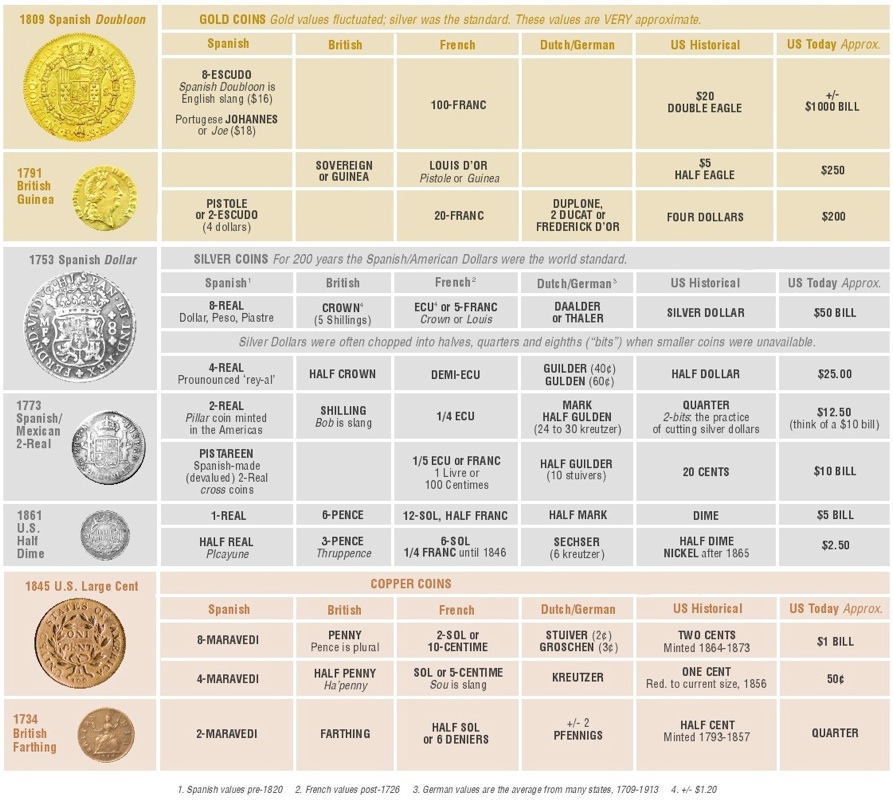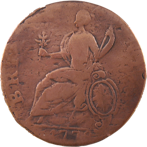Historical money equivalents

coin names you may encounter, arranged by metal, relative size and nATIONALITY


small cent, 1858; large cent, 1802
Museum Collection

1861 half dime, 1888 nickel
Museum Collection
By the mid 1800s, most small change had become token money, worth less in metal content than its face value.

18th Century British quarter-size coins:
gold guinea ($4.66), silver shilling (22¢) and copper half penny (1¢)
Loaned by Allan Cross
This chart compares historical coins in terms of size and approximate BUYING POWER. Spanish silver coins were most common in North America until US coins outnumbered them by the mid-1800s. British coins, except coppers, were virtually non-existent here, even though Colonial prices were expressed in British terms. These are rough equivalent values, so we can compare to a day’s pay, or to familiar modern denominations like a quarter or a ten-dollar bill.
WHAT METAL, HOW BIG?
Gold was 15 to 16 times more valuable by weight than silver. Originally, coins of similar size, weight and metal had about the same buying power as any other. In time, governments found it useful to reduce the amount of precious metal in small coins to keep them in circulation. But any quarter-size silver coin had about the same buying power as any other, $10 to $12.50 modern, and a quarter-size copper was worth about 1 cent until the mid 1800s.
COPPER DISTRUSTED
British coppers, mostly the half penny and the farthing, were common in early America, but a majority were underweight and/or counterfeit. States also issued copper cents and copper tokens were made by stores and trade associations. Although necessary as small change (some halved and quartered examples have been found) copper coins often traded at a discount until after the Civil War.
COPPER DEMANDED
During the Industrial Revolution, copper prices climbed with the demand for products like telegraph wires and steam boiler tubes, until it cost more to make a cent than it was worth. In 1856, American cents were reduced to their current size with less copper content. Later, cheaply made nickel 5-cent pieces replaced the tiny, easily lost silver half dime.


Counterfeit George III halfpenny, c.1789
Mahar collection
Old Stone Fort
